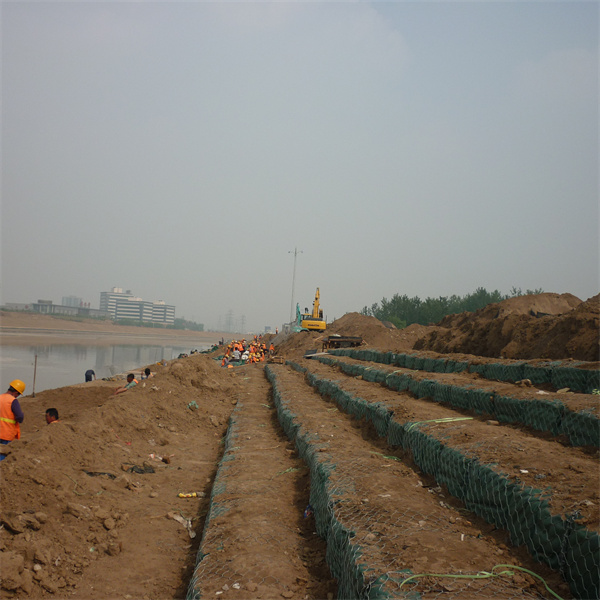Dec . 04, 2024 18:10 Back to list
best rocks for gabion cages
Best Rocks for Gabion Cages Choosing the Right Material
Gabion cages are structures made from steel mesh filled with rock, concrete, or other materials. They're commonly used in civil engineering applications for erosion control, slope stabilization, and even decorative landscaping. The efficacy and longevity of a gabion wall significantly depend on the type of rock used to fill the cages. In this article, we will explore the best rocks for gabion cages and the factors to consider when selecting the appropriate material.
1. Types of Rocks Suitable for Gabion Cages
When choosing rocks for gabion cages, you'll want to consider both aesthetics and functionality. The most commonly used types include
- Granite Known for its durability and resistance to weathering, granite is an excellent choice for gabions. Its angular shape makes it easy to stack, forming a solid structure that can withstand significant pressure.
- Limestone This sedimentary rock is readily available and relatively inexpensive. While it may not have the same longevity as granite, limestone's natural beauty and variety in colors can contribute to the aesthetic appeal of your project.
- River Rock Smooth and rounded, river rocks can provide a softer look for gabion walls. However, their shape makes them less stable than angular stones, which could compromise the overall strength of the structure.
- Basalt A volcanic rock, basalt is dense and extremely strong, making it a suitable option for gabions, especially in areas prone to heavy rainfall or erosion. Its dark color can add an attractive contrast to landscaping projects.
- Quartzite Another durable option, quartzite is known for its hardness and resistance to wear. It often features a range of colors and patterns, making it visually appealing for decorative gabion applications.
2. Factors to Consider
When selecting rocks for gabion cages, several factors should guide your decision
- Size The size of the rocks is crucial for the effectiveness of gabion installations. Typically, rocks should range from 4 to 6 inches in diameter. Using a uniform size can enhance stability and make filling the cages easier.
best rocks for gabion cages

- Shape Angular rocks interlock better and provide greater stability than rounded rocks. If the rocks are too smooth, the gabion structure may not hold up under pressure.
- Weight Heavier rocks will offer more stability and help to resist erosion. However, consider the weight during transport and installation, as it may require specialized equipment.
- Availability The most suitable rock type depends largely on what is available in your local area. Using locally sourced materials can reduce transportation costs and environmental impact.
- Aesthetic Appeal If the gabion wall serves a decorative purpose, the color and texture of the rocks can be significant. Consider how the stones will blend with the existing landscape.
3. Installation Tips
Once you’ve selected the best rocks for your gabion cages, proper installation is key to ensuring their longevity and effectiveness. Here are some tips to keep in mind
- Prepare the Site Before installing gabions, ensure the site is well-drained and stable. Clearing away vegetation and debris will help the structure perform better.
- Layering When filling the cages, start from the bottom and work your way up. This method helps to maintain stability as you fill each layer.
- Compaction As you fill the cages, ensure the rocks are compacted. This step is essential for minimizing voids and enhancing the overall strength of the structure.
Conclusion
The proper selection of rocks for gabion cages is essential for achieving both aesthetic and functional goals. By understanding the different types of rocks and considering factors such as size, shape, weight, and availability, you can make informed decisions that will lead to successful and long-lasting gabion structures. Whether you are building for practical reasons or decorative purposes, the right rocks will ensure that your gabion cages serve their purpose effectively while enhancing the beauty of the landscape.
-
The Role of Galvanized Gabion Mesh in Riverbank Protection
NewsJun.26,2025
-
The Role of Gabion Basket Raised Bed in Sustainable Gardening
NewsJun.26,2025
-
Quality Assurance of Wire Mesh Gabion Baskets
NewsJun.26,2025
-
Installation Guide for Welded Gabion Box
NewsJun.26,2025
-
How to Choose the Right Gabion Box
NewsJun.26,2025
-
Different Types of Gabion Wire Mesh
NewsJun.26,2025
-
Why PVC Coated Gabion Mattress Is the Best Solution for Long-Term Erosion Control
NewsMay.23,2025






